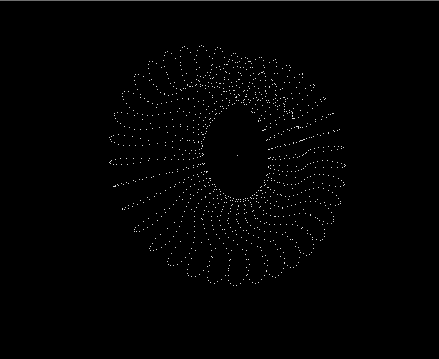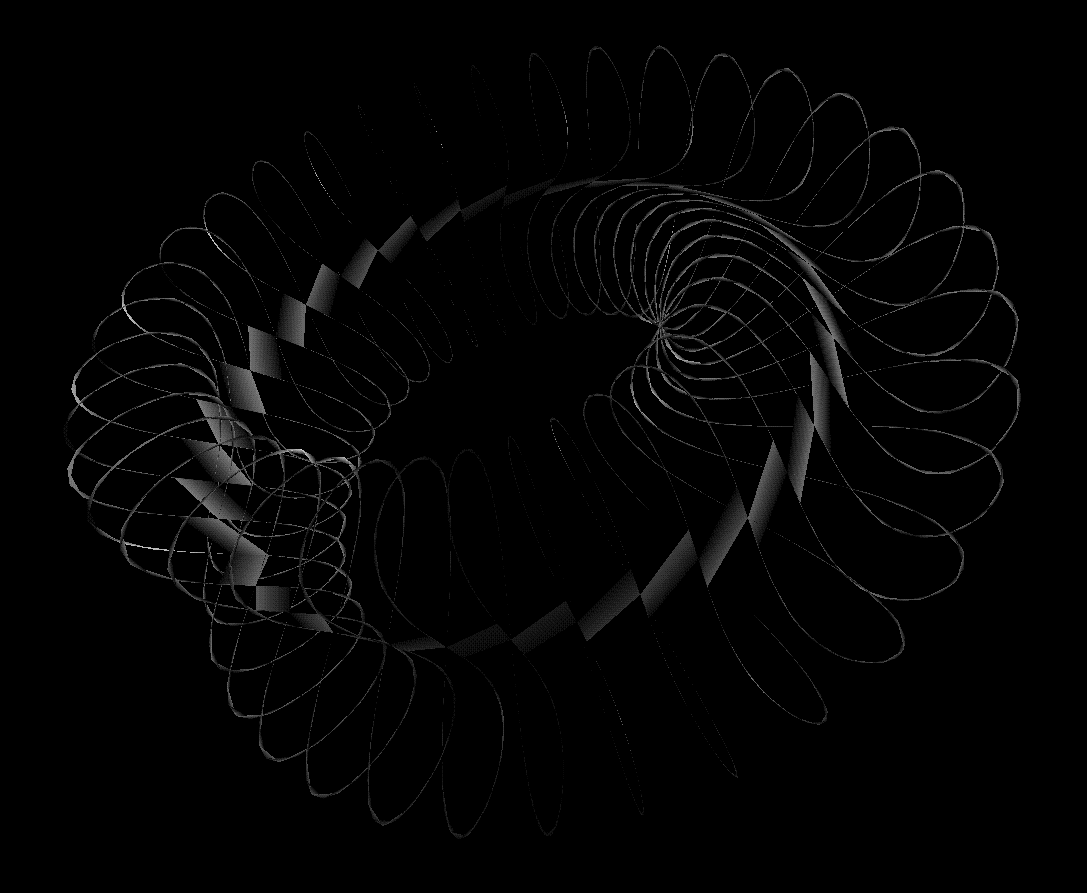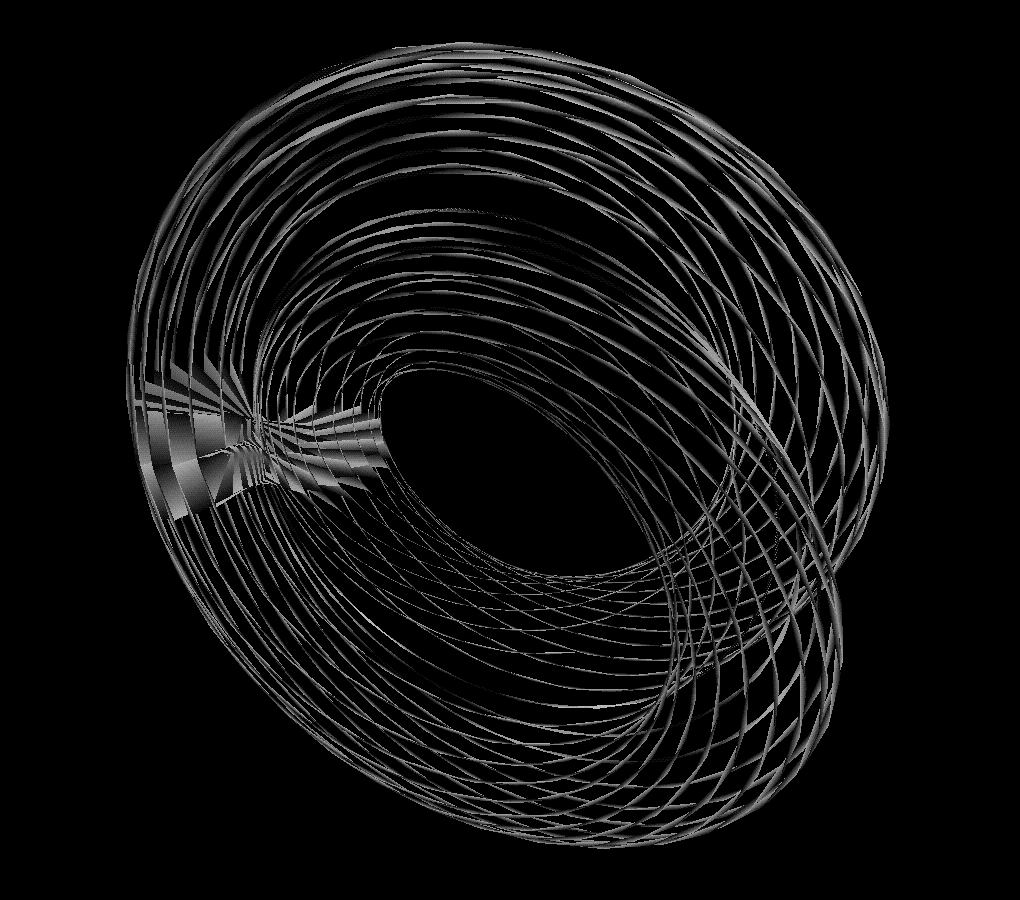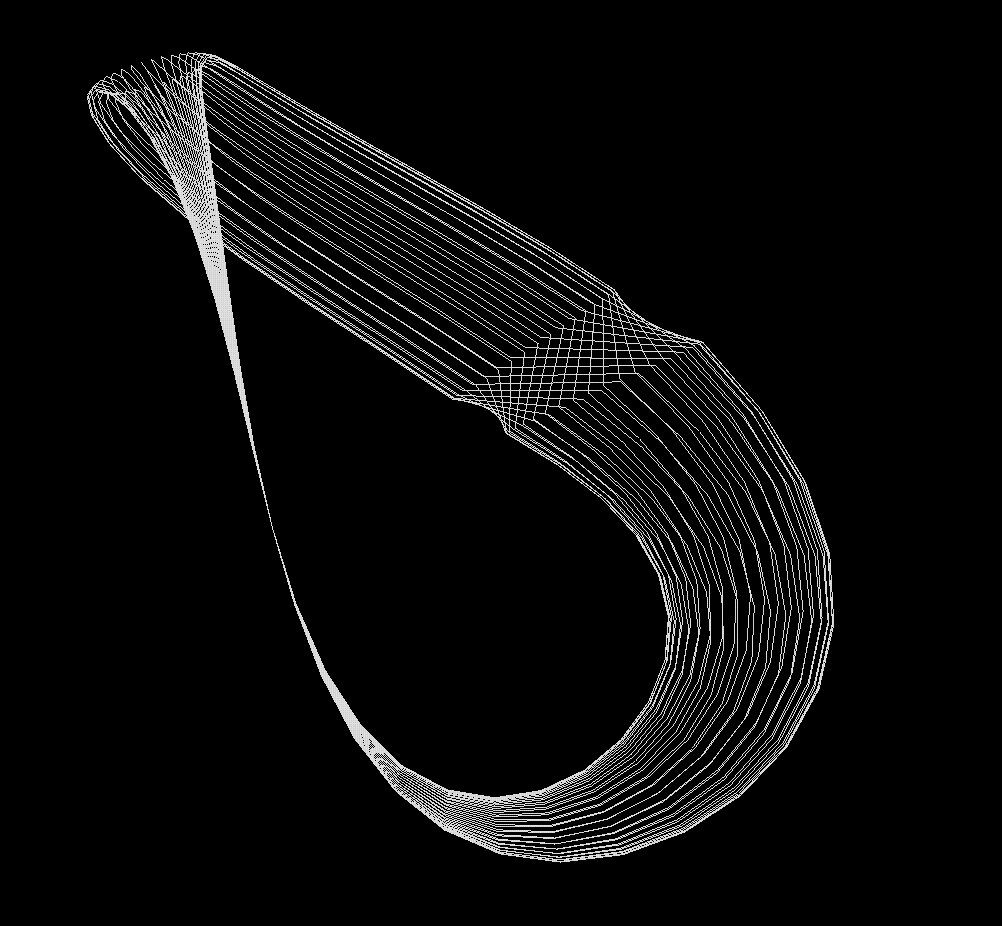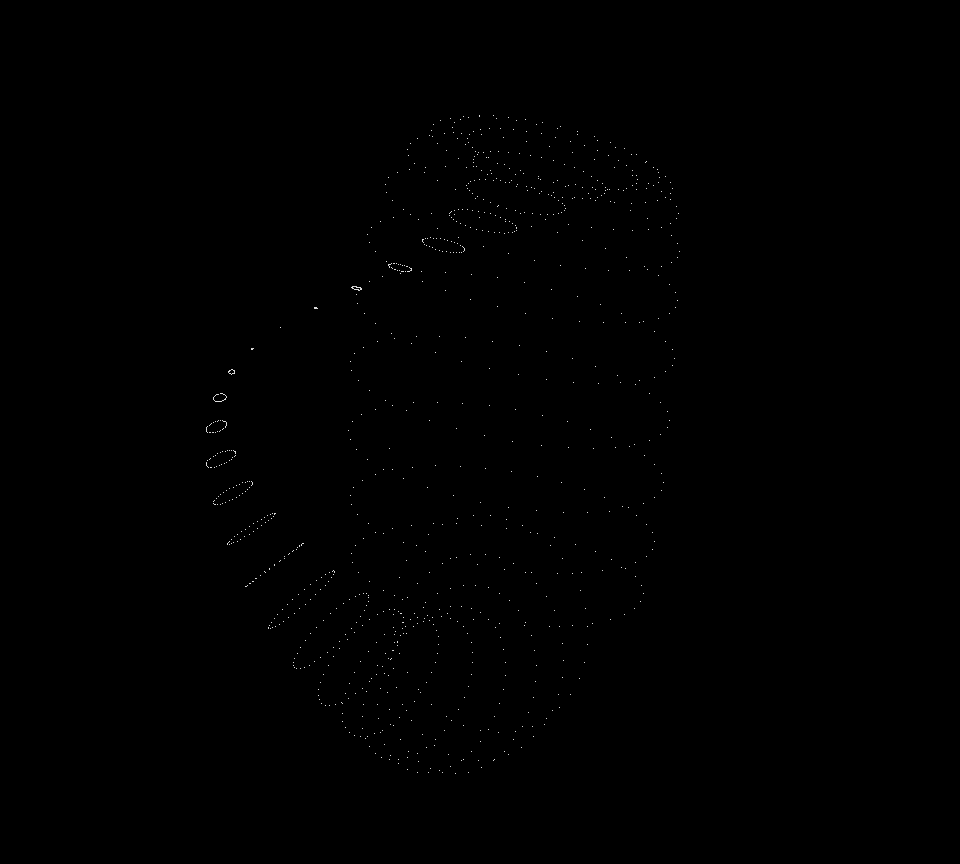On Growth and Form 2.0 Midterm Project
Chloe Chao
Spring 1997
The Klein bottle is a closed surface that has no interior. Perhaps
its closest kin is the Mobius strip. Regardless, the basic principle
of continuity is the same.
In the following images (which you can click on to make larger), I
have used the parametric equations defined below to define a Klein
bottle that is two Mobius strips joined together to make a closed
surface.
Here is a quicktime movie of one of my
klein examples.
To realize the Klein bottles in 3D requires the surface to intersect
itself. What I would be interested in is to perhaps define the Klein
bottle over time, thereby adding a "fourth" dimension.
Methods: The program that generates the points is written in C++ and
uses the Inventor C++ graphics libraries to display the point/line
sets to the screen.
Acknowledgements/References: The parametric equations for these forms
can be found at Paul Bourke's
site, which in general is an excellent computer graphics reference
site.
Chloe M.
Chao / last updated April 9, 1997
